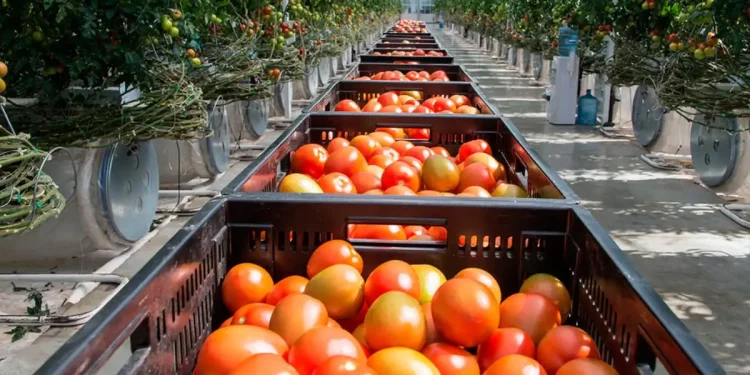On June 23, 2022, Moscow will host the III Agricultural Forum “Greenhouse Industry of Russia – 2022” – an industry event dedicated to the development, problems and prospects of the greenhouse business in the country. The event will be held simultaneously in online and offline formats, according to the official press release of the organizers of the event.
Tamara Reshetnikova, General Director of the research company Growth Technologies, will speak at the III International Forum Greenhouse Industry of Russia – 2022 with a presentation “The balance of demand and supply of greenhouse products. Forecasts of changes in the balance of power and competition”.
sdelanounas.ruPhoto: sdelanounas.ruOn June 23, 2022, the III Agricultural Forum “Greenhouse Industry of Russia – 2022” will be held in Moscow
Since 2007, Technologies of Growth has been engaged in marketing research of the agricultural markets of the Russian Federation and the CIS countries, and today it is a recognized authoritative expert in the field of protected ground. Regular analytical studies and predictive assessments of future changes in the greenhouse business are widely used by potential investors, operating greenhouse management, credit institutions, service companies and popular media.
Commercial vegetable growing in protected ground in Russia has been one of the most dynamically developing branches of agriculture for the last 8 years.
Starting from 2012, crops of commercial producers in protected ground are characterized by a clearly defined upward trend, with the highest rate of gross harvest growth occurring in the period from 2016 to 2019, which corresponds to the maximum level of state support for the industry.
The gross harvest of greenhouse vegetables in Russian greenhouse complexes over the past 20 years has grown by 2.8 times, which is a phenomenal result in the conditions of the Russian economy.
In 2021, the total vegetable yields of commercial producers of protected ground exceeded the landmark mark of 1.5 million tons.
Thanks to the mass construction and commissioning of industrial greenhouses of the latest generations, equipped with highly efficient equipment, systems and technologies, the greenhouse industry of the Russian Federation has now become one of the most advanced in the world. A fundamental change in the structure, technologies, selection and volumes of domestic production has increased the quality, availability and competitiveness of local vegetables for Russian consumers at any time of the year by an order of magnitude.
The “locomotives” of greenhouse vegetable growing in Russia are the Central, North Caucasian and Southern federal districts.
It is in their territories from 2015 to 2021. many successful industrial greenhouses were built, which dramatically increased the self-sufficiency of all Russians in off-season fresh products. Megacities of the European part of the country, thanks to the implemented greenhouse projects, the spread of retail chains and well-established logistics, today are characterized by a developed consumer culture, and the balance of supply and demand corresponds to the market of perfect competition.
At the same time, since Russia is part of the world market and is heavily dependent on imports for a number of production components, one cannot underestimate the possible impact of global risk factors on the domestic agricultural sector, which increase the level of uncertainty, which reduces the attractiveness of agribusiness for large investors. Traditional consumer behavior is corrected against the backdrop of high inflation and uncertainty about the future.
Nevertheless, even taking into account the introduction of all six packages of anti-Russian sanctions in the spring of 2022, domestic producers of greenhouse vegetables may well become beneficiaries in the current difficult situation.
Tamara Reshetnikova’s speech will highlight critical aspects of changes in the market balance of supply and demand for greenhouse products in Russia in the spring of 2022. The Forum participants will be offered an expert forecast of future events in terms of price parity, trade supply, domestic production volumes, import-export flows and competition in the industry protected ground.












